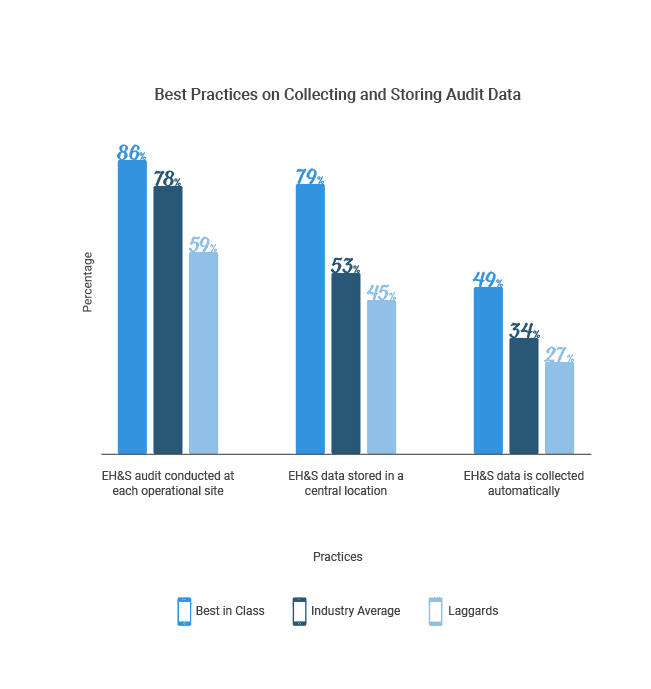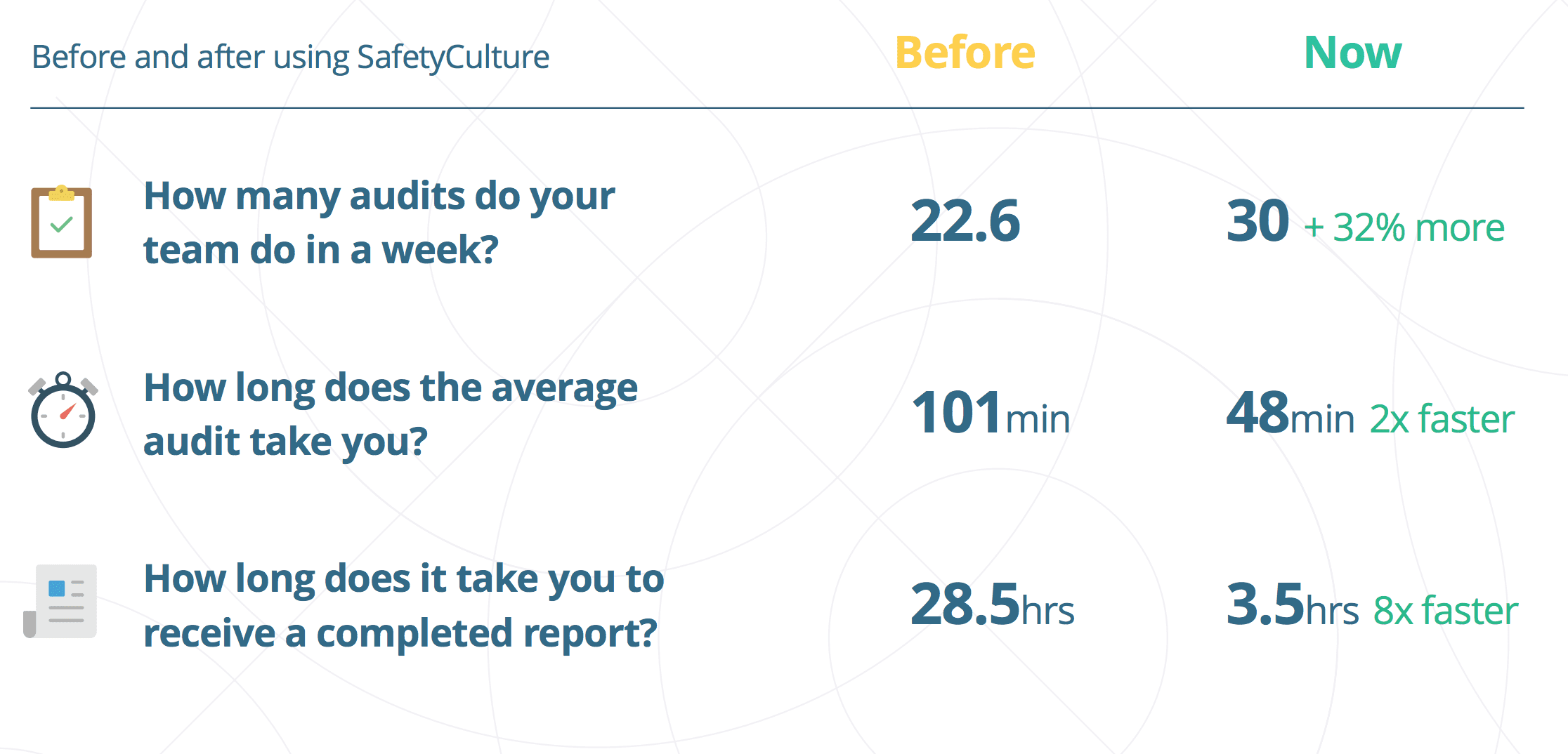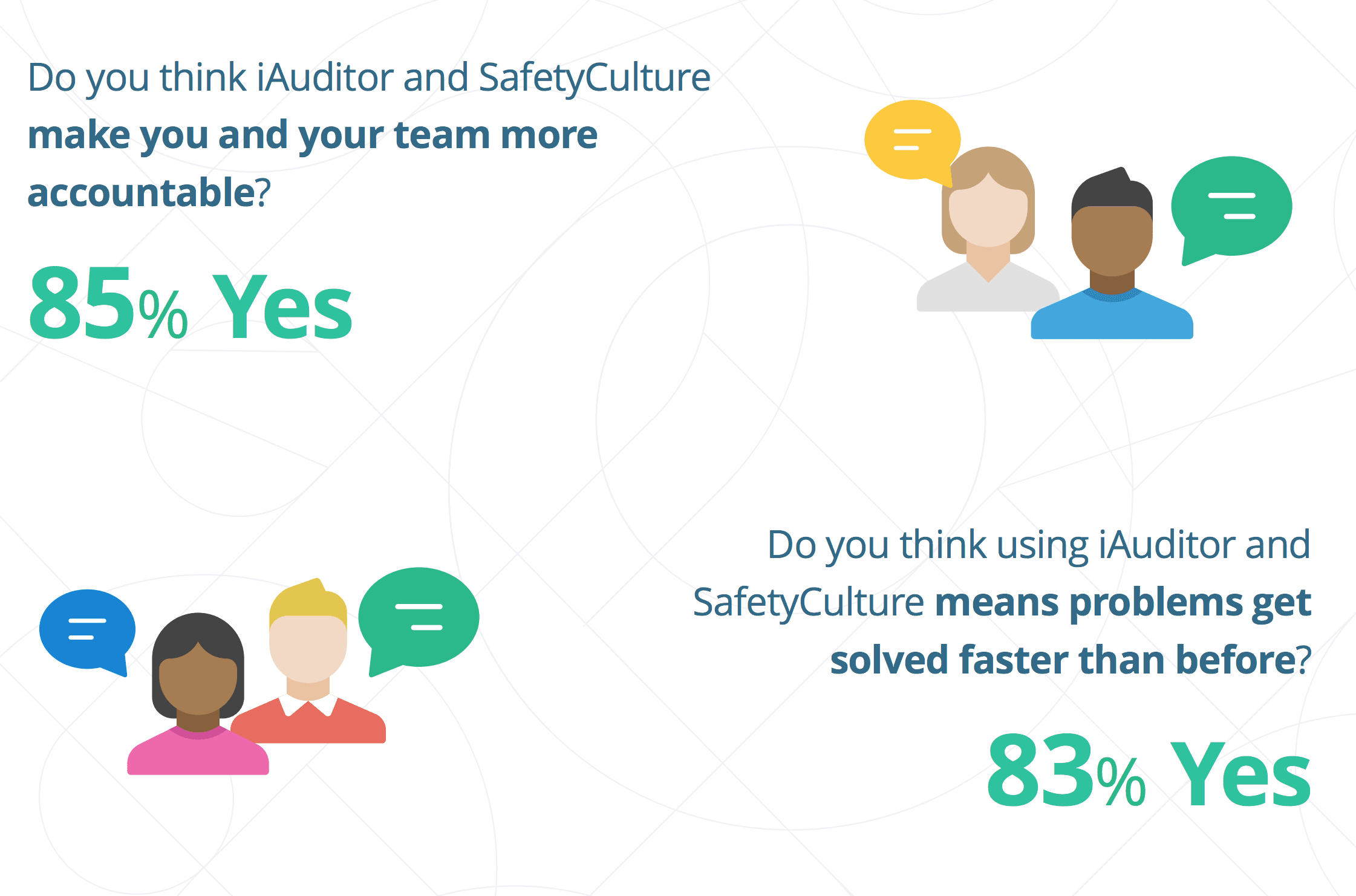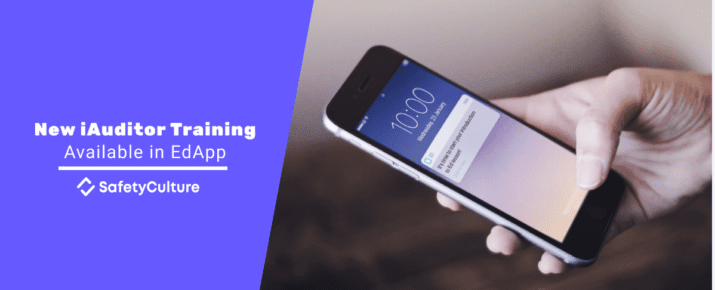The ROI of Digital Audits
iAuditor by SafetyCulture Tips | Tips & Tricks | By | 21 Apr 2017 | 3 minute read

The ROI of digital audits comes mainly from the increased efficiency and enhanced communication. A streamlined solution automates a lot of manual auditing practices so that companies can increase their operational efficiency along with safety and quality standards.
In other words, companies might start out just wanting to transfer their paper audits to a digital system, but what they actually end up doing is:
- Increasing operational efficiency
- Standardizing quality and safety practices by location, auditor, and project
- Measuring and proving quality and safety program effectiveness
- Saving time and money on safety initiatives
While some organizations see huge wins with a mobile and digitized auditing solution, others see only modest gains. What leads some companies to see huge ROI on a mobile auditing solution when others don’t?
In this post we’ll cover:
- Recent research on mobile and digital auditing
- Customer accounts of the impact that SafetyCulture has had on their organization
- How different levels of digital auditing sophistication impact the bottom line
- How to maximize your existing digital auditing tool
Achieving “best in class” in safety
Companies who are considered “best in class” in safety by an Aberdeen Report are more likely to have a centralized auditing system, conduct audits at each site (made possible by digital audits) and collect safety data automatically. Being “best in class” means these companies are reporting fewer incidents, but also saving money by being more efficient and delivering on tighter project deadlines.

“Best in class” companies are also over two times more likely to use mobile devices in the field. This enables easier audit reporting from any location. It also enables field workers to provide real-time feedback on any issues in the field. This immediate feedback loop creates a more proactive safety organization, rather than a reactive one. Similarly, the implementation of digital account opening processes can transform customer onboarding, making it more efficient and enhancing the user experience by leveraging technology for seamless interactions.
But how does digital auditing impact an organization?
SafetyCulture conducted a survey amongst a subset of our customers and following are some of the results.

The stats above indicate more frequent audits, shorter auditing times (without sacrificing on the quality of the audits) and shorter reporting times. Thanks to streamlining certain manual processes, like adding photos directly into a report, field workers have an easier way to document issues. They also have a faster means of communication with managers to escalate hazards.

Digital audits help hold your team accountable for organizational standards. They create an easy-to-use (and thus more often used) system of checking everyday processes. They also allow auditors to sign off on certain tasks and serve as a reminder for more easily-forgettable tasks.
With these efficiency gains that some companies are seeing, why do others miss out on the full potential that a digital auditing tool provides?
A big part of this is the safety processes that provide the foundation for the digital auditing system. Bill Gates has famously said, “The first rule of any technology used in a business is that automation applied to an efficient operation will magnify the efficiency. The second is that automation applied to an inefficient operation will magnify the inefficiency.” When you put a digital auditing tool in place, don’t simply digitize old paper checklists. This gives you the opportunity to revisit existing processes and see if they’re still serving their intended purposes.
Some questions you may want to consider include:
- What is our existing process for communicating new safety procedures?
- Do we have all the checks in place that we need or are there areas that could use more formal processes?
- Do new employees understand the safety processes well enough?
- Should we consider retraining in any areas?
- What is our existing communication between the field and the office? Do we have enough avenues for feedback?
- Do we have enough visibility into what contractors are doing and how they’re performing?
- Are there clear safety goals and KPIs? Is everyone aware of them?
- Do we track the right data in our audits?
- Do we have a formal process for revisiting trends in our audit data and finding ways to improve?
- Does management have a clear idea of how safety procedures are performing?
This is just a sample of some of the questions you’d want to start asking as you’re revisiting your auditing process. They’ll help you rethink your safety procedures as a whole and give you insight into where you want your auditing tool to help out. You may even want to get multiple teams involved and source ideas on improvements from them.
A lot of safety professionals see technology as an “all or nothing” approach, but digital auditing is a bit different. You can start by digitizing your paper checklists. Then if you continue to improve upon how you use the tool, it will have a much larger impact on your team. The most successful safety professionals who use digital auditing have a vision for how they want to impact the organization. They also understand that it’ll take time and lots of adjustments along the way.
Important Notice
The information contained in this article is general in nature and you should consider whether the information is appropriate to your specific needs. Legal and other matters referred to in this article are based on our interpretation of laws existing at the time and should not be relied on in place of professional advice. We are not responsible for the content of any site owned by a third party that may be linked to this article. SafetyCulture disclaims all liability (except for any liability which by law cannot be excluded) for any error, inaccuracy, or omission from the information contained in this article, any site linked to this article, and any loss or damage suffered by any person directly or indirectly through relying on this information.





